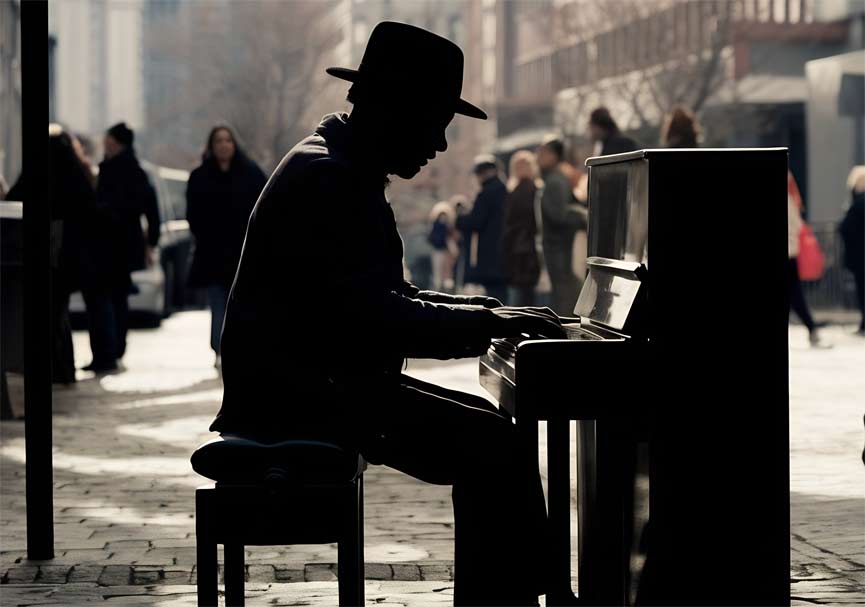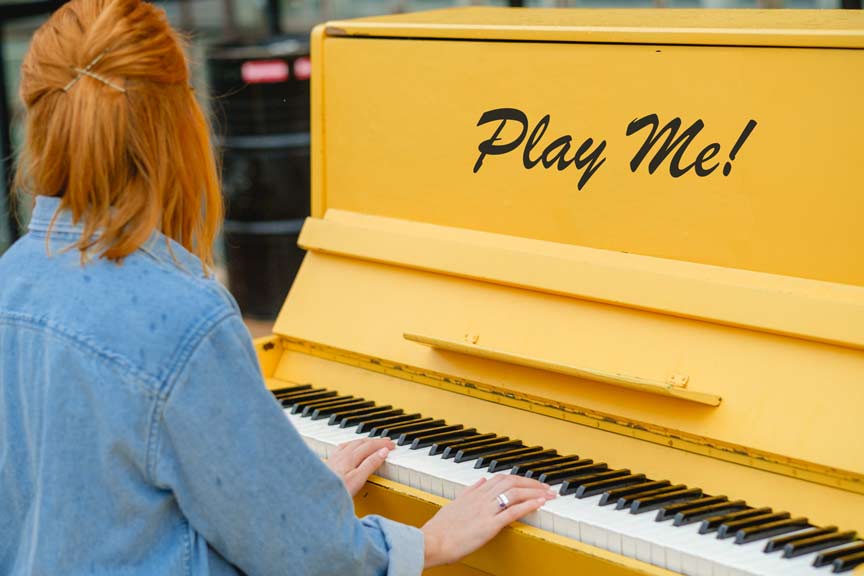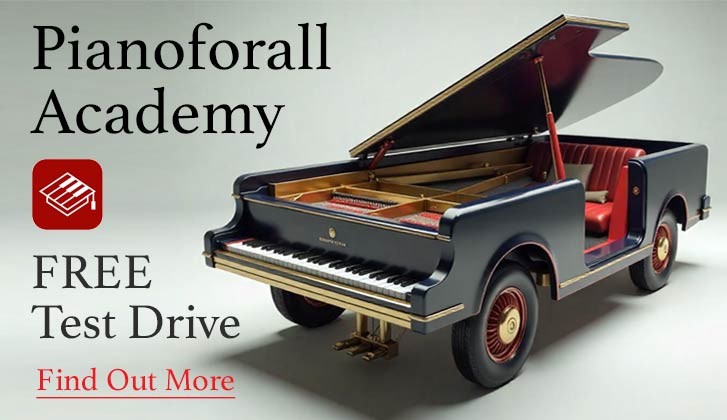Two centuries later, railway stations are still places of excitement and connection. But now, they offer another kind of magic: the sound of a piano.
The Rise of Public Pianos
If you’ve walked through a busy station in London, Paris, New York, or even Melbourne, you may have seen one. A piano, sitting quietly in the concourse, waiting for someone to play.
The idea of public pianos began as an art project. In 2008, British artist Luke Jerram placed pianos in parks and public spaces with a simple sign: Play Me, I’m Yours. Since then, more than 2,000 pianos have appeared in over 70 cities worldwide. And railway stations have embraced the idea more than almost anywhere else.
Why stations? Because they are crossroads. People rush through them. People wait in them. And music can turn those everyday moments into something unforgettable.
Music That Stops Us in Our Tracks
There is something magical about hearing a piano in a station. You expect the clatter of footsteps and the announcement of trains. Instead, you hear Chopin or ABBA. Or perhaps a hesitant beginner playing a simple tune they learned years ago.
These pianos remind us that music is for everyone. No ticket is needed. No concert hall required. Just sit down and play.
One of the most famous examples is the piano at St Pancras International in London. Over the years, world-class pianists such as Lang Lang have sat down to surprise commuters. But just as often it’s an everyday person, dusting off old skills and filling the station with melody.

Platform 88: Pianos with a Purpose
Now imagine this. You’ve just stepped off a crowded Tube train at Paddington or King’s Cross. You’re half-thinking about your next connection, half-wondering what to have for dinner. Then suddenly, music cuts through the station hum. A piano. Live, real, right there.
That was the vision behind Platform 88, an initiative from Transport for London and Yamaha. The project placed pianos in stations across the capital, with a playful nod to the 88 keys on the keyboard. But its real purpose was to encourage ordinary people to sit down, play, and bring music into the everyday rush of London life.
It wasn’t just about professional musicians. It was about the woman dusting off a tune she hadn’t played since childhood. The student taking a break from revision. The commuter trying out a favourite melody before heading home. For the listeners—hundreds of strangers sharing a station concourse—it was an unexpected gift.
To launch the project, a few famous names added their sparkle:
- Jamie Cullum, the jazz-pop pianist, turned the station into an impromptu concert hall.
- Elton John, in true showman style, surprised travellers by sitting down at a bright red piano.
- Freya Ridings, the singer-songwriter, filled the Underground with her haunting hit Lost Without You.
These moments made headlines, but the true magic was what followed. Day after day, travellers of all ages and abilities began to take a seat. Some stumbled through a few notes. Others filled the concourse with music that stopped people in their tracks. And each time, a station became more than a place to catch a train—it became a stage, a community, a shared human experience.
Why It Matters
For many people, these public pianos spark memories. Maybe you learned piano as a child. Maybe you stopped when life got busy. Hearing someone play in a station can stir a powerful feeling: I wish I could do that again.
And the good news is—you can. Learning or relearning to play the piano has never been more accessible. Online piano courses like Pianoforall are helping thousands of adults rediscover the joy of playing music. You don’t need years of lessons or formal training. With step-by-step video tutorials and a play-first approach, even beginners can sound great in weeks.
A Journey of Your Own
The railway transformed travel in the 19th century. It gave people freedom, connection, and adventure. In a similar way, a piano can transform our inner journeys. It can reconnect us with joy, creativity, and a sense of play.
So next time you’re in a railway station and hear a piano, stop for a moment. Listen. You’re not just hearing notes. You’re hearing two centuries of travel and human connection, brought together in music.
And maybe, just maybe, it will inspire you to start your own musical journey—with a little help from Pianoforall.



